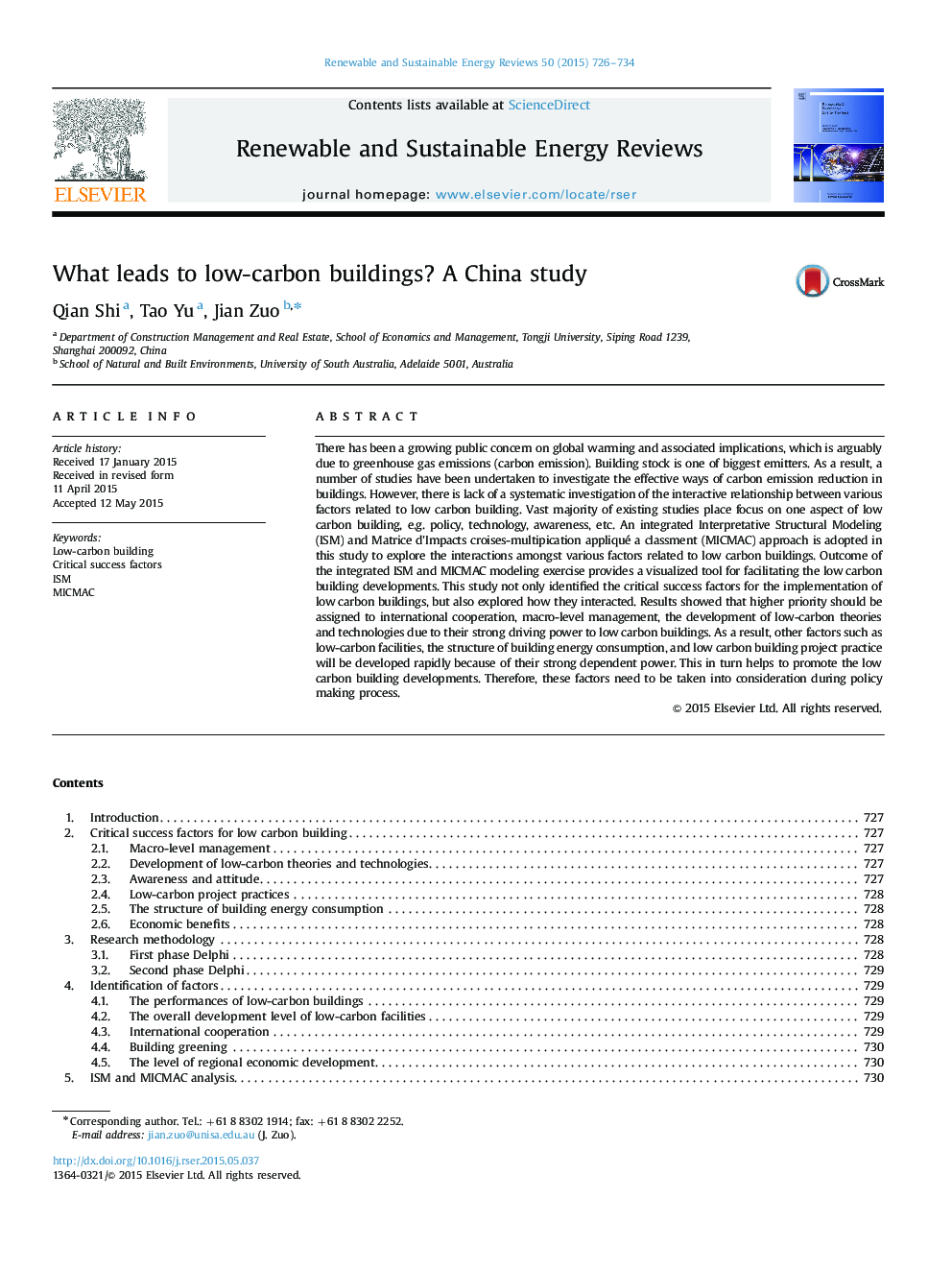| Article ID | Journal | Published Year | Pages | File Type |
|---|---|---|---|---|
| 8116156 | Renewable and Sustainable Energy Reviews | 2015 | 9 Pages |
Abstract
There has been a growing public concern on global warming and associated implications, which is arguably due to greenhouse gas emissions (carbon emission). Building stock is one of biggest emitters. As a result, a number of studies have been undertaken to investigate the effective ways of carbon emission reduction in buildings. However, there is lack of a systematic investigation of the interactive relationship between various factors related to low carbon building. Vast majority of existing studies place focus on one aspect of low carbon building, e.g. policy, technology, awareness, etc. An integrated Interpretative Structural Modeling (ISM) and Matrice d׳Impacts croises-multipication appliqué a classment (MICMAC) approach is adopted in this study to explore the interactions amongst various factors related to low carbon buildings. Outcome of the integrated ISM and MICMAC modeling exercise provides a visualized tool for facilitating the low carbon building developments. This study not only identified the critical success factors for the implementation of low carbon buildings, but also explored how they interacted. Results showed that higher priority should be assigned to international cooperation, macro-level management, the development of low-carbon theories and technologies due to their strong driving power to low carbon buildings. As a result, other factors such as low-carbon facilities, the structure of building energy consumption, and low carbon building project practice will be developed rapidly because of their strong dependent power. This in turn helps to promote the low carbon building developments. Therefore, these factors need to be taken into consideration during policy making process.
Related Topics
Physical Sciences and Engineering
Energy
Renewable Energy, Sustainability and the Environment
Authors
Qian Shi, Tao Yu, Jian Zuo,
